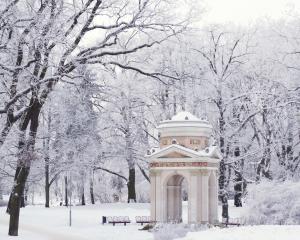
It is said, "When in Rome, do as the Romans do".
So, when in Mauritius, drink rum like the locals do!
Rum is the Indian Ocean Island’s most popular alcoholic beverage, which, since the 18th century, has been produced using fresh sugarcane juice and molasses, one of its by-products, resulting in a variety of styles and flavours. The island’s distilleries skilfully harness the natural sweetness of the sugarcane, creating rums that are rich, flavourful and uniquely Mauritian.
A distinct feature of Mauritian rum is the use of the island’s diverse botanicals, such as vanilla and topical fruits like pineapples, in the crafting process. These flavoured rums are a delightful expression of Mauritius’ terroir, offering a unique and captivating tasting experience, which I gained while visiting the Rhumerie de Chamarel distillery located in the lush, hilly region of southwestern Mauritius.

While the Portuguese made some early attempts to explore the totally uninhabited island, it was the Dutch who first established a colony there in 1638. They named the island Mauritius, honouring their Prince Maurice van Nassau. They left sooner than later, making way for the French to take over in 1710. Renaming it Isle de France, they used the volcanic island’s fertile soil to cultivate sugarcane, knowing the worldwide demand for sugar at that time was rocketing. They forcefully acquired labourers from neighbouring African countries like Madagascar and introduced a torturous regime of slavery, which ended after the British won the naval war against France in 1810 and gained sovereign control of the island.

Since independence from the British in 1968, the government has been held by Mauritians of Indian origin, the majority of whom are Hindus. As a result, the island reflects strong Indian features and hues of Hinduism in almost every corner. Dedicated to God Shiva, the Maha Shivaratri is their biggest religious festival, and Dhol Puri, an Indian delicacy, is their favourite street food.

The history and cultural insights of Mauritius are eloquently stored in the galleries of many museums dotted in Port Louis. The Blue Penny Museum, the National History Museum, and the Museum of Slavery generally draw the attention of the historically minded.

Considering the depth of historical and cultural significance, Unesco has listed two sites in Mauritius under the banner of World Heritage. The first one is the Aapravasi Ghat in Port Louis. Earlier called "Coolie Ghat", it was at this waterfront location that the boats from India with the labourers, called derogatorily "Coolies" by the British masters, touched shore, and their arrival was recorded before being sent to the various plantations. Some were later transported to other British colonial destinations in southern and eastern Africa, the Caribbean, or the Pacific. A multi-media display inside a museum on site provides interesting information on one of the world’s largest migrations of humans, and the entire precinct, with some buildings from that period, is deemed the starting point of the modern-era contract labour system.
Beyond the capital, the other Unesco site of immense cultural value is Le Morne Mountain, which was a hideout for the slaves. Many of them kissed death by jumping down from the top to save themselves from the unbearable torture of their masters. While there, it’s hard to keep the eyes dry when thinking about the plight of the slaves.

The island is ringed by nearly 330km of white sandy beaches and blue lagoons, which are protected from the open sea by a cluster of coral reefs. These features make Mauritius a haven for people who enjoy a range of water activities like swimming, sunbathing, fishing, snorkelling and diving to appreciate the underwater scenery.

These attributes blend with the clear blue sky, fresh air, warm tropical climate and unhurried lifestyle to make Mauritius ideal for anyone keen to slow down and relax, recharge their mind, body and soul, and have a good time with family and friends or just by themselves.
To welcome this band of holidaymakers, the island is mushroomed with resorts, which are tucked in isolated locations, embracing comfort and luxury with a variety of rejuvenation facilities and multi-cuisine dining options to keep guests occupied with something they want to do while getting gastronomically indulged. A trendy activity I noticed among guests was spending time at the poolside reading a book while sipping a rum-based cocktail.
Travel
Getting There: Fly Air New Zealand (www.airnewzealand.co.nz) to Perth, from where Air Mauritius (www.airmauritius.com) flies three times a week direct to Mauritius.
Stay: Plush resorts are dotted throughout the island, Anantara Iko Mauritius, (www.anantara.com), Heritage Le Telfair (https://heritageresorts.mu/hotels-mauritius/le-telfair) and the Long Beach (www.longbeachmauritius.com) are three popular ones from the long list.
More Info — https://mauritiusnow.com












